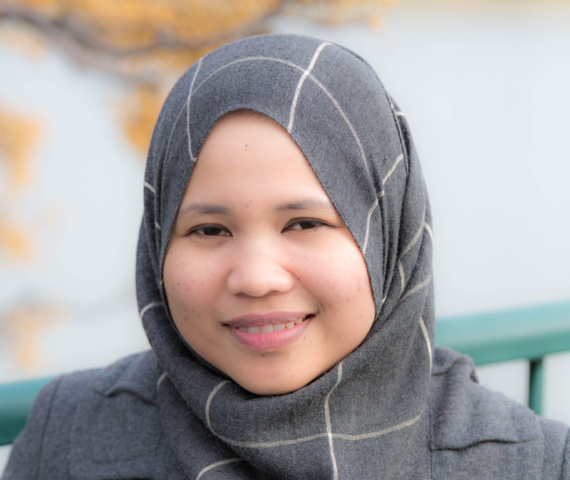Che Samihah Che Dalim
Che Samihah Che Dalim
PhD Student
Che Samihah Che Dalim is a visiting PhD student at the Empathic Computing Lab. She is studying at Universiti Teknologi Malaysia (UTM).
Publications
-

Using augmented reality with speech input for non-native children's language learning
Che Samihah Che Dalim, Mohd Shahrizal, Sunar, Arindam Dey, MarkBillinghurstDalim, Che Samihah Che, et al. "Using augmented reality with speech input for non-native children's language learning." International Journal of Human-Computer Studies 134 (2020): 44-64.
@article{dalim2020using,
title={Using augmented reality with speech input for non-native children's language learning},
author={Dalim, Che Samihah Che and Sunar, Mohd Shahrizal and Dey, Arindam and Billinghurst, Mark},
journal={International Journal of Human-Computer Studies},
volume={134},
pages={44--64},
year={2020},
publisher={Elsevier}
}Augmented Reality (AR) offers an enhanced learning environment which could potentially influence children's experience and knowledge gain during the language learning process. Teaching English or other foreign languages to children with different native language can be difficult and requires an effective strategy to avoid boredom and detachment from the learning activities. With the growing numbers of AR education applications and the increasing pervasiveness of speech recognition, we are keen to understand how these technologies benefit non-native young children in learning English. In this paper, we explore children's experience in terms of knowledge gain and enjoyment when learning through a combination of AR and speech recognition technologies. We developed a prototype AR interface called TeachAR, and ran two experiments to investigate how effective the combination of AR and speech recognition was towards the learning of 1) English terms for color and shapes, and 2) English words for spatial relationships. We found encouraging results by creating a novel teaching strategy using these two technologies, not only in terms of increase in knowledge gain and enjoyment when compared with traditional strategy but also enables young children to finish the certain task faster and easier.

